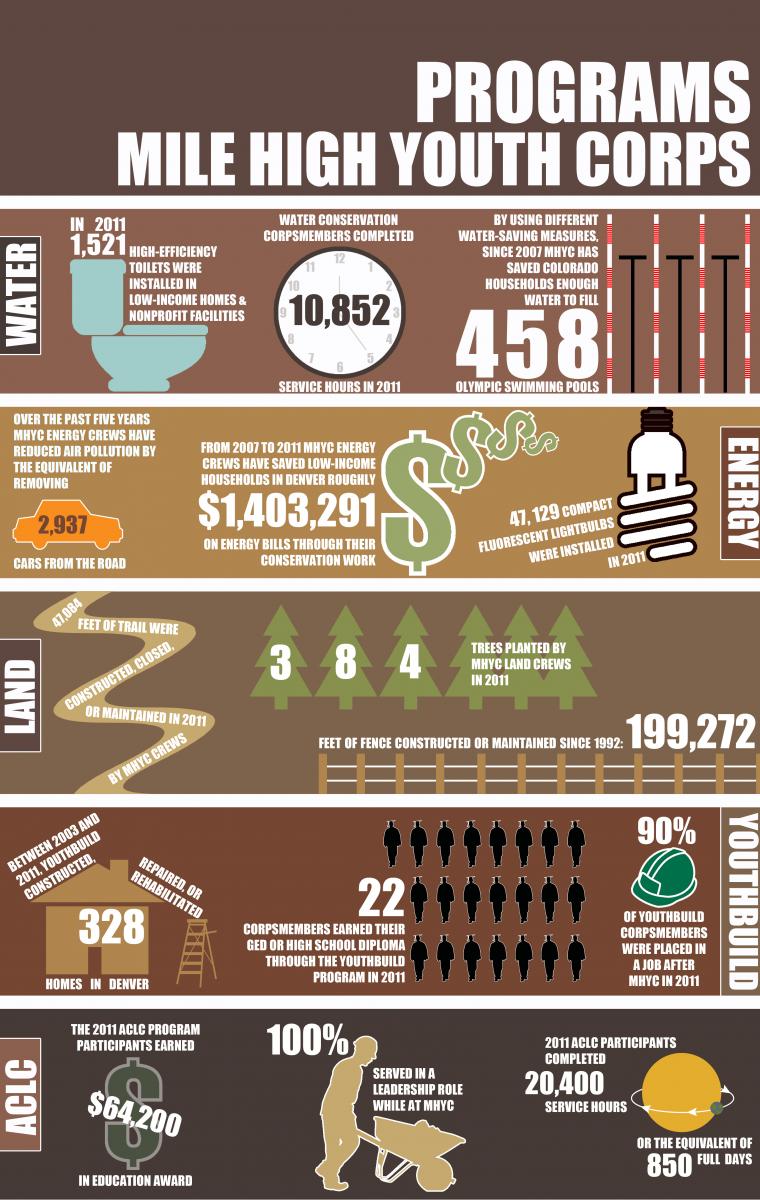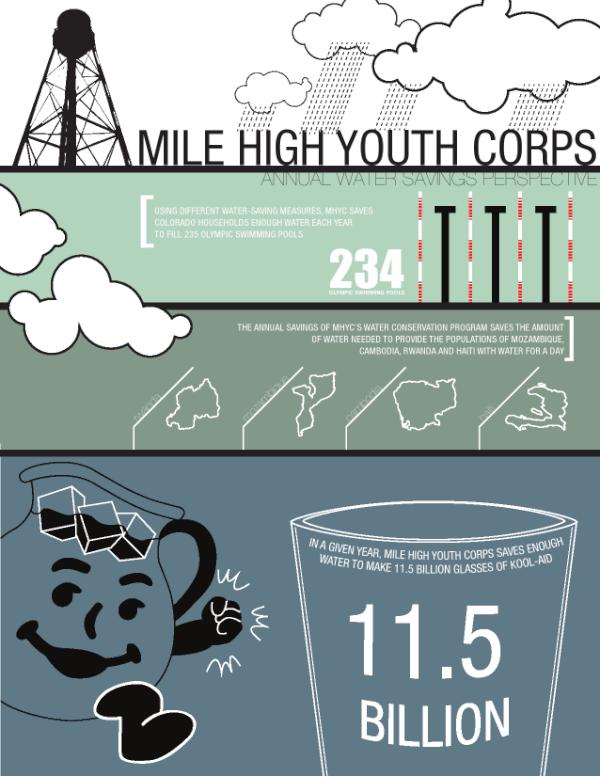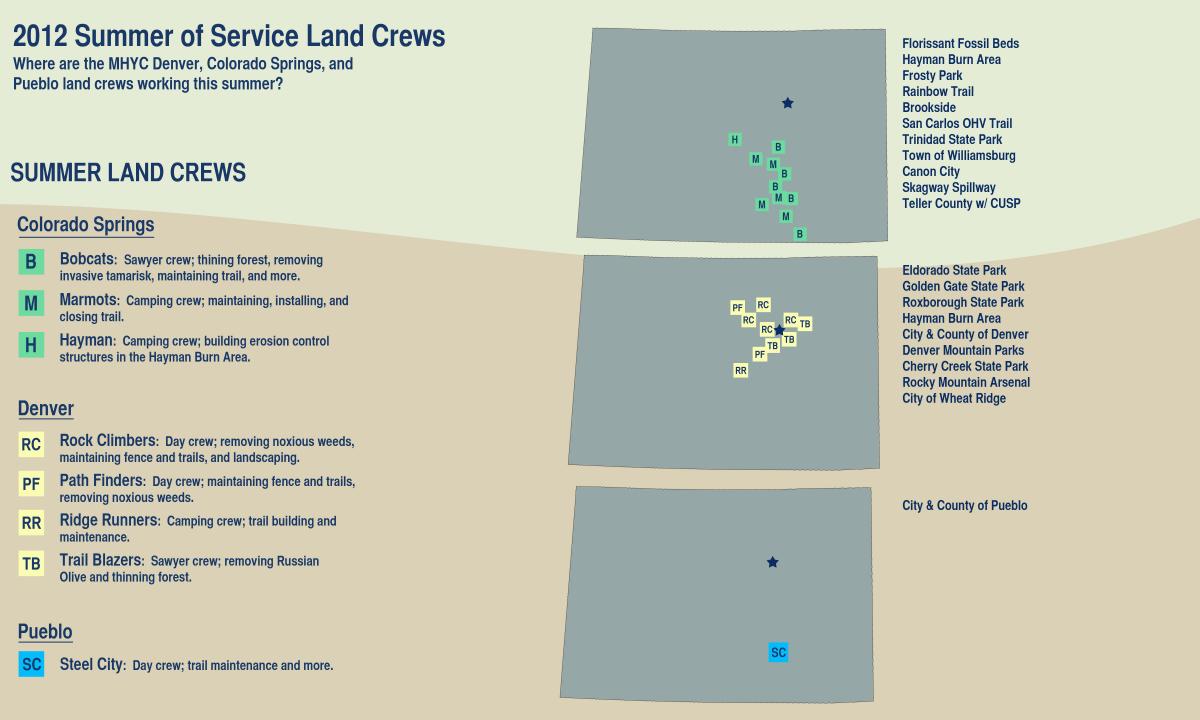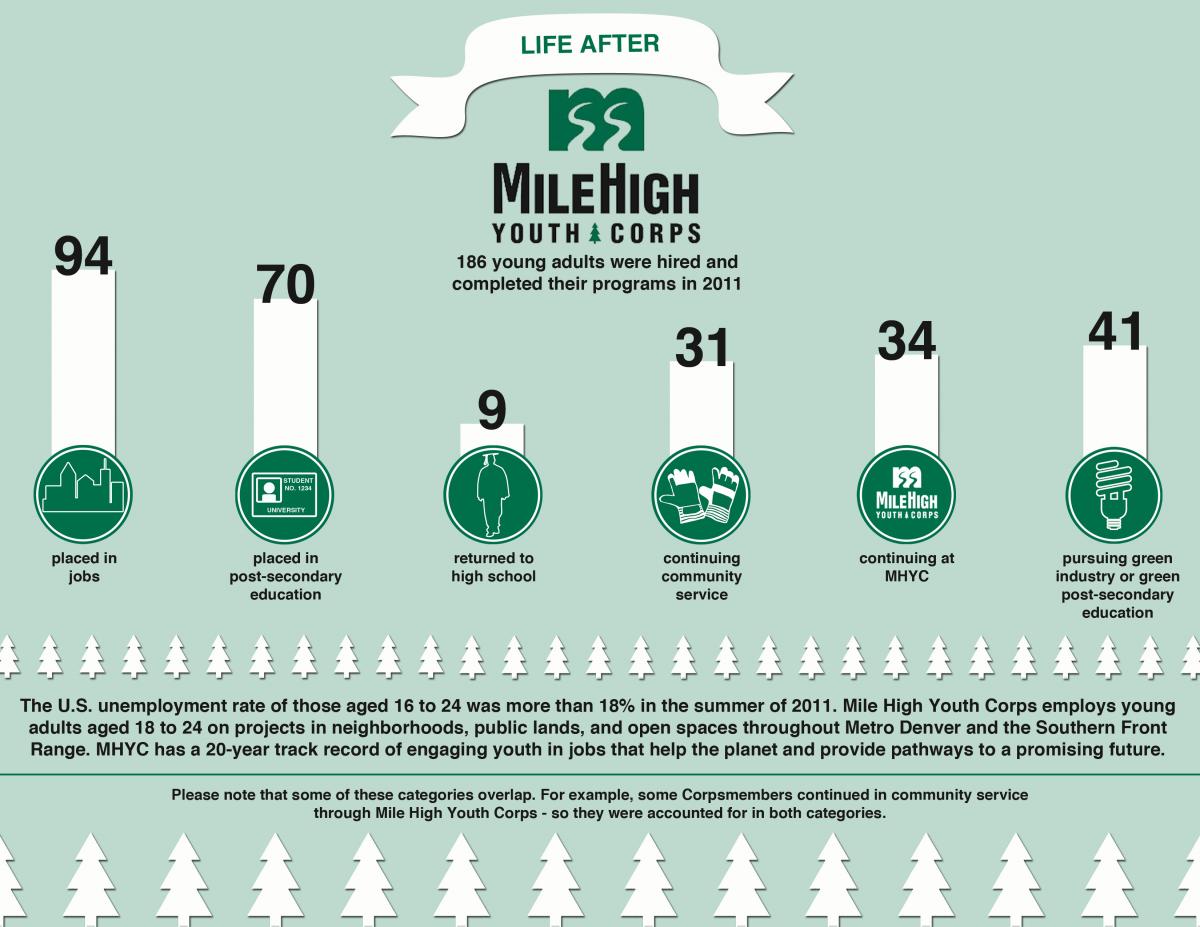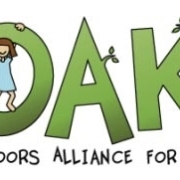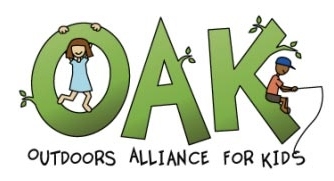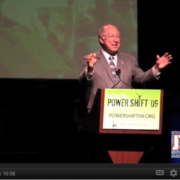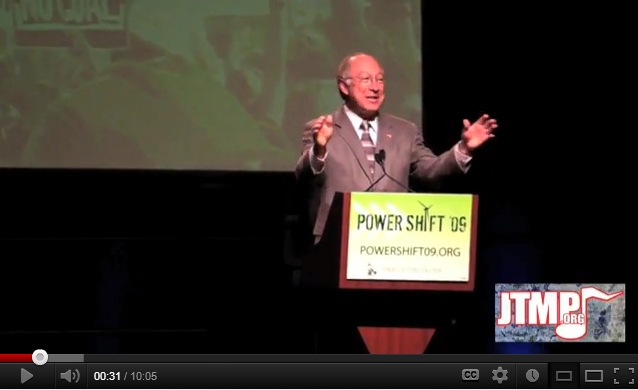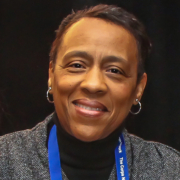This morning The White House released a press release describing the creation of the Summer Jobs+ initiative, a series of commitments aimed to bolster pathways to employment for low-income and disconnected youth following the failure of such efforts to pass as part of the Americans Jobs Act proposed by President Obama last year. Rob Spath, Interim CEO of The Corps Network released the following statement:
“The Corps Network is very excited to see the White House and President Obama solidly engaged to increase youth employment and even more excited about the emphasis being placed on full-time job opportunities for disconnected youth. The President’s quote “we need to do everything we can to make sure they’ve got the opportunity to earn the skills and a work ethic that come with a job” could not be more in line with our business. This bold leadership is just what we were hoping to see and The Corps Network will make every effort to capitalize on this opportunity including being actively involved with the White House Council for Community Solutions and reaching out to the agencies and businesses who have been identified as willing to make significant commitments.”
Below you can find the official White House release about Summer Jobs+ as reprinted from www.whitehouse.gov
The White House
Office of the Press Secretary
For Immediate Release
January 05, 2012
We Can’t Wait: The White House Announces Federal and Private Sector Commitments to Provide Employment Opportunities for Nearly 180,000 Youth
Today, the White House announced Summer Jobs+, a new call to action for businesses, non-profits, and government to work together to provide pathways to employment for low-income and disconnected youth in the summer of 2012. The President proposed $1.5 billion for high-impact summer jobs and year-round employment for low-income youth ages 16-24 in the American Jobs Act as part of the Pathways Back to Work fund. When Congress failed to act, the Federal government and private sector came together to commit to creating nearly 180,000 employment opportunities for low-income youth in the summer of 2012, with a goal of reaching 250,000 employment opportunities by the start of summer, at least 100,000 of which will be placements in paid jobs and internships. Today’s announcement is the latest in a series of executive actions the Obama Administration is taking to strengthen the economy and move the country forward because we can’t wait for Congress to act.
“America’s young people face record unemployment, and we need to do everything we can to make sure they’ve got the opportunity to earn the skills and a work ethic that come with a job. It’s important for their future, and for America’s. That’s why I proposed a summer jobs program for youth in the American Jobs Act – a plan that Congress failed to pass. America’s youth can’t wait for Congress to act. This is an all-hands-on-deck moment. That’s why today, we’re launching Summer Jobs+, a joint initiative that challenges business leaders and communities to join my Administration in providing hundreds of thousands of summer jobs for America’s youth,” said President Obama.
“While young people who are currently disconnected from school or work are not contributing to our economy, we see these young people as ‘Opportunity Youth’ – because of the untapped potential they bring to the Nation. Today, the White House challenged all sectors to go all-in and work together in creating pathways to youth employment. Summer jobs are an important step – and to stay on the path to success, Opportunity Youth need social supports and access to relevant education, mentoring and training. This spring, the White House Council for Community Solutions will participate in community discussions nationwide to learn from best efforts by youth, families, government, business, educators, and nonprofits to connect young people to meaningful career opportunities,” said Patty Stonesifer,Chair of the White House Council for Community Solutions (WHCCS).
The Administration also announced its intention to launch, within 60 days, the Summer Jobs+ Bank, a one-stop search tool for youth to access postings for any participating employers seeking to reach them where they are online. The search tool builds upon an open standard, the JobPosting schema endorsed by schema.org in November, 2011 in support of the Veterans Jobs Bank,and will include technical and promotional support by Google, Internships.com, AfterCollege, LinkedIn and Facebook. Today the Corporation for National and Community Service released a new toolkit created in collaboration with the WHCCS and employers to support businesses and communities in their efforts to help young people become productive citizens and connect to greater opportunities, both of which are critical for the long-term strength and competiveness of the Nation.
Today’s announcements build on previous commitments from the Obama Administration to support summer youth employment. In 2009 and 2010, communities across the country used Recovery Act funds to directly support summer work opportunities for over 367,000 young people. In the summer of 2011, the Department of Labor brought together private sector commitments to employ over 80,000 youth.
A new analysis released today by the WHCCS showed that in 2011 alone, taxpayers shouldered more than $93 billion in direct costs and lost tax revenue to support young adults disconnected from school and work. Over the lifetime of these young people, taxpayers will assume a $1.6 trillion burden to meet the increased needs and lost revenue from this group. Read the full analysis here.
Businesses, non-profits and government can accept the President’s call-to-action by directly hiring youth as well as providing corporate mentorship experiences, internship, and other opportunities that connect young people to jobs. The three key ways organizations can engage are:
- Learn and Earn: Provide youth jobs for the summer of 2012 in the form of paid internships and/or permanent positions that provide on-the-job training. Of the roughly 180,000 job commitments announced today more than 70,000 are Learn and Earn commitments
- Life Skills:Provide youth work-related soft skills, such as communication, time management and teamwork, through coursework and/or experience. This includes resume writing or interview workshops and mentorship programs.
- Work Skills:Provide youth insight into the world of work to prepare for employment. This includes job shadow days and internships. More information about this initiative can be found at dol.gov/summerjobs
As the nation continues to recover from the deepest recession since the Great Depression, American youth are struggling to get the work experience they need for jobs of the future. According to the Department of Labor’s Bureau of Labor Statistics (Current Population Survey):
- 48.8 percent of youth between the ages of 16-24 were employed in July, the month when youth employment usually peaks. This is significantly lower than the 59.2 percent of youth who were employed five years ago and 63.3 percent of youth who were employed 10 years ago.
- Minority youth had an especially difficult time finding employment this past summer. Only 34.6 percent of African American youth and 42.9 percent of Hispanic youth had a job this past July.
In addition to the organizations making commitments for the summer of 2012, the Department of Labor will honor UPS, We Are Golf, Wells Fargo, and Jamba Juice for their strong participation in their 2011 summer jobs effort and the Corporation for National and Community Service will honor Bank of America, State Street, Viacom, Deloitte, and JP Morgan for their leadership in corporate mentoring over the past year.
Commitments Announced Include:
The American Association of People with Disabilities(AAPD) is committed to improving employment outcomes for the many people with disabilities who are ready, willing, and able to work. The AAPD Summer Internship Program will provide 30 young people with disabilities the opportunity to engage in ten weeks of public service through paid internships on Capitol Hill, in federal agencies, nonprofits, and for-profit businesses.
AT&Tis committed to providing nearly 350 summer jobs in 2012 through a variety of summer job initiatives. These opportunities help students, from high school to recent college graduates, develop skills and gain insight while preparing them to more successfully enter the job market. Examples of AT&T summer opportunities for college students include leadership development internships on the fields on finance, retail, IT and engineering, as well as participation in college internship initiatives with the Thurgood Marshall College Fund and the Dr. Emmett J. Conrad Leadership Program. In addition to these unique opportunities, AT&T will also provide high school students the opportunity to experience the world of work through the Mayor’s Interns Fellows Program in Newark, NJ. Also in 2012, AT&T will reach their initial goal of providing 100,000 high school students the opportunity to learn more about career options and what it takes to be successful in today’s workforce through the AT&T/JA Worldwide Job Shadow Initiative.
Bank of America, as part of its broader three-year $50 million goal to support education and workforce development opportunities for underserved populations, will continue to invest significantly in youth and young adults in 2012, including 1,500 paid internships at the company and local nonprofits as well as job placement programs, in conjunction with more than 80,000 hours from employee volunteers. Recognizing the value of mentoring to help make opportunities possible for young people, Bank of America served as the primary sponsor of the National Mentoring Partnership’s 2011 National Mentoring Summit, at which the Corporate Mentoring Challenge was launched. In 2011, Bank of America invested more than $15 million, and its employees volunteered more than 75,000 hours to help youth and young adults attain life and work skills to propel them towards long-term success.
Baxter International Inc.pledges to support Summer Jobs+ by expanding their education initiative, Science@Work. As an extension of Science@Work – a multiyear commitment to support teacher training and student development in healthcare and biotechnology through a partnership with Chicago Public Schools – Baxter will reach 300-500 students. These students will participate in a variety of programs: the Career Training Program, in which Baxter professionals will assist students with career planning, soft skill development and interviewing skills; the 2012 Summer Job Shadowing program, in which students will participate in a unique shadowing experience with young Baxter professionals; and through Science @Work Community of Support, in which students will participate in an on-going relationship management program that provides counsel and professional support during college careers.
Bender Consulting Services, Inc.is committed to investing in youth who are living with disabilities, to support the development of life and work skills required by private and public sector employers. Partnering with local high-schools in Pittsburgh, PA and Newark, DE, Bender Consulting, through the year-long Bender Leadership Academy Program will train 60 high-school students with disabilities, many who are low-income, about how to be successful in the world of work. Four students who complete this program will work on a short-term paid summer internship in Bender Consulting’s offices in Pittsburgh, PA. Bender Consulting will also provide two to four, 12 week summer HR internships to low income youth, including youth with disabilities.
The Camber Corporation provides young people with real-life work experience, opportunities to enhance their professional skillsets, and mentorship from their qualified employees during paid internships. In 2011, 25% of their graduated interns were hired as full-time Camber employees to serve in the areas of accounting, engineering, and human resources. In 2012, Camber plans to offer 8 internship opportunities.
CenturyLinkhas had summer internship programs for more than 25 years and looks forward to participating in Summer Jobs+ in 2012. CenturyLink believe that one of its strengths is the diversity of its people, and they are committed to fostering diversity among the 50 summer jobs they will hire this year.
The Corporation for National and Community Service(CNCS) has made a commitment to provide approximately 4,000 disadvantaged youth with national service opportunities through AmeriCorps programs operating in the summer of 2012. The AmeriCorps VISTA Summer Associate Program, funded in part through private sector commitments, will place youth in communities across the country to address poverty and hunger. In addition, AmeriCorps State and National programs will engage youth in education and conservation projects, and the AmeriCorps NCCC Summer of Service program is designed to introduce teenagers, especially those from disadvantaged circumstances, to national service and to foster in them such values as teamwork, responsibility, and the ethic of serving one’s community. These stipended service opportunities train youth in the life and work skills, such as teamwork, problem solving, and leadership, that are critical for success in the labor market, while engaging in activities that tackle tough societal challenges.
CVS Caremarkis committing to hire over 20,000 youth between the ages of 16 and 24 in 2012. Many of the new employees will occupy part-time and full-time positions such as pharmacy service associates, technicians, cashiers and interns in a variety of corporate functions.
Deloitte helps American high school students prepare for college and careers through its Their Future Is Our Future program. As part of this program, 500,000 students have experienced the Life Inc. career exploration curriculum and Deloitte is committed to serve tens of thousands of students in 2012. Through a series of lessons, self-discovery techniques, and virtual role models tailored for youth in middle and high school, Life, Inc. introduces students to various career possibilities and helps them determine what kind of educational experiences they will need in order to pursue them. The program includes a website, career guide, teacher’s guide and student journal, which features seven lessons that are delivered by teachers in schools and after school youth programs. Additionally, through deep relationships with national nonprofits that lead on education including MENTOR, United Way, College Summit and City Year, Deloitte contributes cash, pro bono service and the time of one-on-one mentors to help young people pursue the education and skills they need to succeed in the 21st century.
The Department of Agriculture has made a commitment to provide approximately 7,100 youth with the opportunity to gain valuable work experience during the summer of 2012 by working with various USDA Mission Areas and Agencies throughout the country. The USDA provides leadership on food, agriculture, natural resources, and related issues based on sounds public policy, the best available science, and efficient management. USDA is committed to forming a pipeline of talented youth who will be our future leaders by giving them the opportunity for hands-on work experience in a variety of science, technology, engineering, math, administrative, management, agribusiness and industry positions.
The Department of Health and Human Services(HHS) will commit to supporting 324 summer jobs for low-income youth in 2012. HHS offices will be supporting paid summer jobs as well as other employment enhancement opportunities. The Office of Human Resources’ Strategic Programs Division (SPD) will host at least two classes in the “Life Skills” pathway to support 120 youth. These classes will have up to 50 participants each and will focus on work-related soft skills, such as communication, time management, and teamwork. Additionally, SPD will allow for 20 students to participate in the “Work Skills” pathway. These 20 students will shadow SPD employees for the day to offer insight into the federal workplace and to prepare them for employment.
The Department of the Interior has committed to providing approximately 12,000 young Americans with work opportunities in the summer of 2012 on public lands, tribal lands, national parks, wildlife refuges, and environmental restoration projects nationwide. Interior has increased the number of summer job opportunities it offers for young people under the Obama administration by 30 percent – helping more people from all walks of life to enjoy the great outdoors, and to pursue work opportunities and careers in the stewardship of America’s natural, cultural, and historic resources as part of the President’s America’s Great Outdoors initiative.
The DirectEmployers Associationis a nonprofit HR consortium of leading global employers formed to improve labor market efficiency through the sharing of best practices, research and the development of technology. They are committed to hiring 5 youths this summer in the Indianapolis area to provide opportunities to learn the skills needed to be successful in the workforce as well as to encourage and motivate them to continue with their education.
Discovery Communicationsprovides multiple avenues for young people to discover a summer job and a lasting career. Through the Discover Your Skills campaign youth can learn about exciting career opportunities in skilled trades and critical growth areas like manufacturing, health care, energy, technology, construction and other industries. A partnership with Montgomery College provides community college students with the skills they need to take advantage of available job opportunities. In addition, Discovery’s robust internship program will provide nearly 300 college students career opportunities in a variety of fields in 2012.
Easter Sealswill be working to create summer opportunities for three young people with disabilities and will be disseminating information about the Summer Jobs+ initiative throughout their nationwide network of affiliates. These positions will be in the “learn and earn” category of the initiative. While working for Easter Seals, young people will have the opportunity to learn various aspects of nonprofit management including marketing and corporate relations, public policy, program management, development and more.
Expeditors, through its Opportunity Knocks program, recruits and supports disconnected youth so they can get training in a professional environment that can be leveraged for future success. Since starting the program in 2008, Expeditors has helped 25 disconnected youth in six offices throughout the United States and is committed to adding 75 positions in another twenty offices in 2012 to bring the total participation to 100 youth.
Gap Inc.is supporting 80,000 youth in 2012 through a variety of programs, which include connecting youth to employment through the development of relevant life skills and work ready skills, as well as providing on-the-job training through learn and earn experiences.
General Dynamics C4 Systemsis committed to hiring 40 young people during the summer of 2012 and is partnering with Sentinels of Freedom, Wounded Warriors, Diversity Careers, SWE, SHPE, NSBE and WOC to support hiring needs nationwide.
Goodwill Industries Internationalis proud to be one of the first organizations to support the Summer Jobs+ program. Through Goodwill’s unique social enterprise business model, it creates employment and job training. This year, the organization will expand services for youth at the beginning their careers. Goodwill is committed to hiring 1,200 youth ages 16 to 24, provide more than 3,200 youth with life skills services and over 2,300 with work skills services. Almost 2,000 youth will be engaged in learn and earn services. Thousands more youth will be provided virtual career mentoring and exploration services.
H-E-Bhas committed to expand their summer jobs program by 19 percent. In the summer of 2012, 5,171 16-24 year olds will be hired to work at H-E-B.
J.B. Hunt Transportis focused on providing opportunities for young people to experience a professional working environment, particularly those in the Hispanic community in Arkansas. Through a partnership with ALPFA, the company reaches out to local high school students and helps raise awareness of opportunities in business, and provides mentors for college students. For 2012, J.B. Hunt is increasing the number of summer positions at headquarters to 20, and expanding college internships at our field locations throughout the United States.
Jamba Juicehas made a significant commitment to training and hiring young people and will pledge to hire at least 2,500 youth in the summer of 2012. Jamba Juice has a successful summer in 2011 when the company hired nearly 2,700 youth for summer work — 200 more than their pledge made as part of the “Summer Jobs USA: Make a Commitment” initiative. Additionally, Jamba Juice also recently launched a new internship program for Job Corps students.
JPMorgan Chase has been a leader in supporting “Learn and Earn” and “career and skill development” programs in cities all across the country for decades. During the 2011 Corporate Mentoring Challenge, JPMorgan Chase was inspired to step up in a leadership role – by funding and launching the Illinois Mentoring Partnership, introducing other potential funders and connecting non-profit organizations, who deliver the programs. In Chicago, JPMorgan Chase also has supported, since its creation 20 years ago, After School Matters, a program that helps teens discover and nurture their talents and aspirations for future successes. The bank’s support in 2012 will provide 1,300 teens with hands-on, project-based programs to learn about rewarding careers and to help develop marketable job skills.
LinkedInhas committed to offer 200 internships in the summer of 2012. Additionally, LinkedIn is committed to adopting the JobPosting schema and letting any company post their summer internship jobs (or entry level jobs) on the LinkedIn website at no cost.
ManpowerGroupis proud to support summer jobs through a direct commitment of 20 jobs at our global headquarters in Milwaukee, Wisconsin and at Manpower branch offices across the nation. Through its work with local Workforce Investment Boards and One-Stop Career Centers, Manpower supports employment opportunities for thousands of people touched by the public workforce system.
Operation HOPE, as part of the Gallup-HOPE Index Cities Initiative, commits to secure 20 businesses and place 500 youth through youth business internships, mentorships, shadow days or actual small business or entrepreneurship start-ups. Through the Gallup-HOPE Index Cities initiative, Operation HOPE, in partnership with Gallup intend to create a new youth entrepreneurial and business class in America, along with a new culture of progressive business mentoring by Corporate America.
PricewaterhouseCoopers LLP (PwC) maintains a strong focus on providing learning and work opportunities for youth in the United States. Through its host of early-identification programs and a robust internship program designed for undergraduate students, PwC seeks to provide students the learning, coaching, and training opportunities and professional relationships they need to develop professionally and personally, while also learning about unique opportunities in a career in professional services. For the summer of 2012, PwC is committed to hiring 1,500 youth across the country.
The SI Organization will hire more than 100 young people in 2012 for full-time entry-level and internship/co-op positions focused on engineering and integration services in the U.S. Intelligence Community, Department of Defense and other agencies.
Starbucks Coffee Companyis supporting more than 25,000 youth this summer through a variety of programs. The company will work with local nonprofits and others to engage 20,000 young people in life skills and job readiness development. This commitment is in alignment with our Youth Action Grants programs, supporting young people to address critical issues in their communities. Starbucks supports nonprofit organizations to give young people the skills and resources to be catalysts for change through community service. One example of an organization Starbucks supports is Generation On in multiple cities across the US; this is a program of Hands On Network. Starbucks plans to work closely with its grant recipients to maximize the life skills training and service opportunities and to increase their outreach to underserved youth. The company will also provide hands-on and learn and earn experiences for 5,000 young people working at Starbucks.
State Street Corporationis committed to providing workforce development and education opportunities to approximately 1,000 youth each summer in cities including Boston, New York, Kansas City, and Sacramento among others. The company supports a continuum of meaningful job opportunities starting with funding subsidized wage placements in community-based organizations for first-time job experiences, as well as placements in professional positions at State Street for those who have developed basic employability skills and are ready for more responsibility.
Syracuse Universitywill provide 200 jobs to college-aged students working in the Say Yes to Education Syracuse’s Summer Camp for academic enrichment and youth leadership. Syracuse University will also provide 50 positions to 16-21 year olds in a SU partnership with CNY Works on a Summer Youth Initiative.
The McGraw-Hill Companies is committed to growing its 12-week paid summer internship program which employs youth across all of their businesses to 260 summer internships for 2012. In 2011, McGraw-Hill employed over 250 Summer Interns and roughly 10% of last year’s interns were offered full-time positions after graduation.
UPS, the global leader in logistics, is continuing its commitment to summer jobs and will offer 1,500 employment opportunities to youth across the country in 2012. Most opportunities qualify for employment benefits and UPS’ educational assistance program which can pay up to $3,000 a year for educational benefits.
Viacom has committed to provide internship and mentorship programs to connect youth to employment opportunities. Through their Summer Associates Program, VIACOM will provide 10 recent college graduates young people a 10 week paid training program in the summer 2012 fostering professional and personal development and unlocking the doors to valuable real-world experience. Through their partnership with POSSE’s Career Program, Viacom will provide 30 college students high school students with a paid internship. In addition, mentoring initiatives such as Viacom’s national mentoring program Get Connected, created with the Get Schooled Foundation, will assist students through meaningful connections with adults with the ultimate goal of helping to keep them in school and realize their true potential.
WE ARE GOLF is a national not-for-profit organization formed to tell the story of the nearly 2 million hardworking men and women who make golf a great sport and whose livelihoods depend on it. Golf courses across the country are building on their 2011 commitment of 2,700 summer jobs and WE ARE GOLF is bringing far more golf courses to this initiative in 2012 to offer tens of thousands more jobs to young people.
Wells Fargo has made an ongoing and significant commitment to its communities, including opportunities for summertime work, networking and training for young people. In the summer of 2012, Wells Fargo will support 1,000 employment opportunities for youth.
Along with significant commitments from across the business sector, national organizations are answering the President’s challenge. United Way Worldwide will work with local chapters in approximately 30 cities and regions to host a series of Community Conversations, where local leaders will join with ordinary citizens to map out what they can do to pull together the support needed to create opportunity and pathways for young adults.
###
About The Corps Network: Established in 1985, The Corps Network is the voice of the nation’s 158 Service and Conservation Corps. Currently operating in 46 states and the District of Columbia, The Corps Network enrolls more than 33,000 young men and women annually in service in addition to mobilizing approximately 265,000 community volunteers each year. For more information visit www.corpsnetwork.org
 Yesterday, wrapping up a round of nominations before the Easter recess, the Senate confirmed Wendy Spencer as Chief Executive Officer of the Corporation for National and Community Service (CNCS). Originally nominated last fall, Spencer was confirmed along with several new members of the CNCS Board of Directors. The Corps Network and its 151 members are delighted with the confirmation of Ms. Spencer. Her extensive history and experience in the world of service are just what is needed at this time.
Yesterday, wrapping up a round of nominations before the Easter recess, the Senate confirmed Wendy Spencer as Chief Executive Officer of the Corporation for National and Community Service (CNCS). Originally nominated last fall, Spencer was confirmed along with several new members of the CNCS Board of Directors. The Corps Network and its 151 members are delighted with the confirmation of Ms. Spencer. Her extensive history and experience in the world of service are just what is needed at this time.


